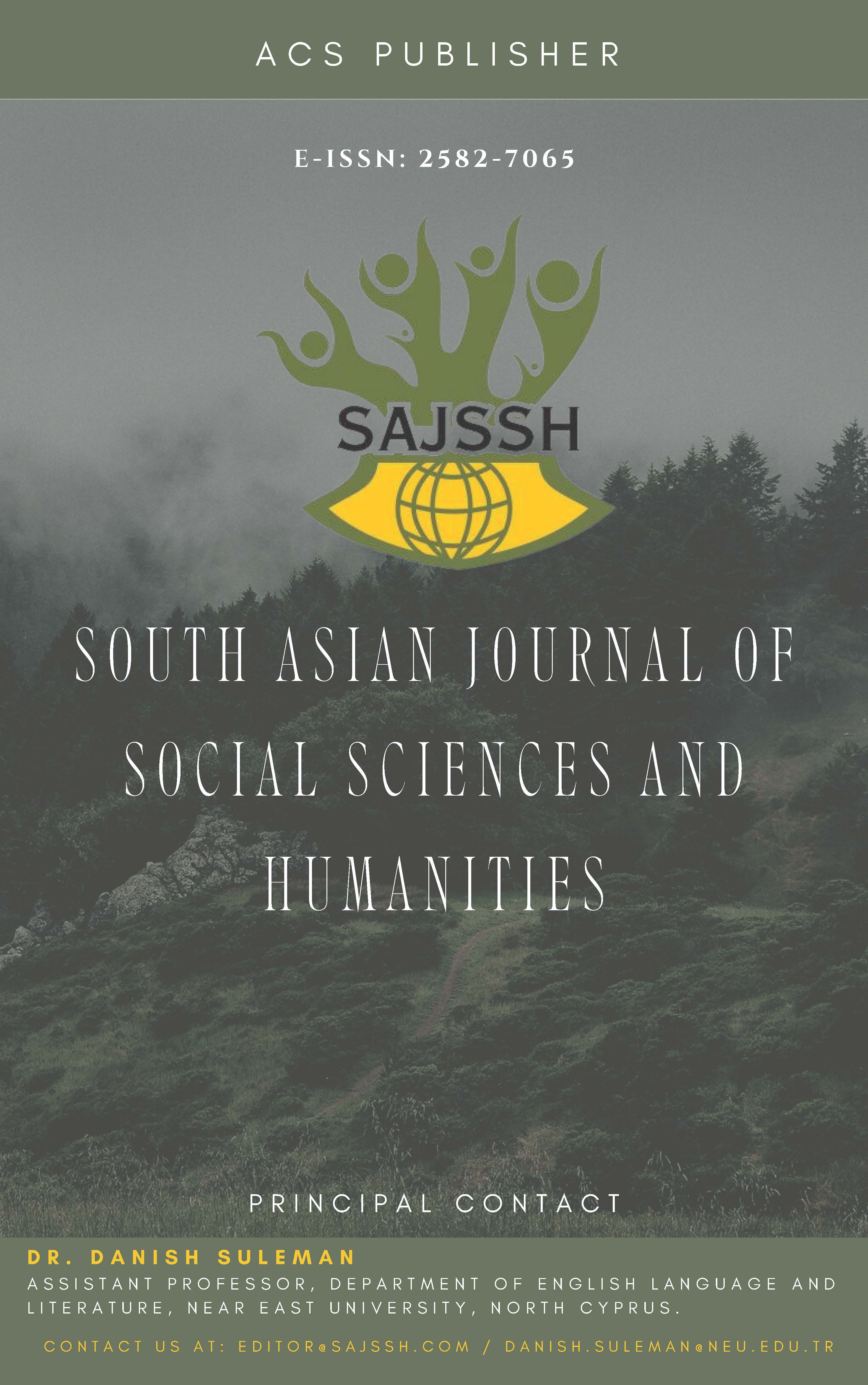Comparative Study on the Social Psychology of Designed and Un-designed University Campus
DOI:
https://doi.org/10.48165/sajssh.2024.6108Keywords:
Campus design, Psychological impacts, Landscape desirability, Mental health, Green spaces, Social psychology, Emotions and behaviourAbstract
This comparative Study on the Social Psychology of Designed and Undesigned Campuses examines how a campus's intentionally or unintentionally designed landscape components influence students’ psychological impacts, attendance and social interactions. It is conducted by a designed online questionnaire based on the components of landscape desirability and students’ mental health responses to that such as understanding, exploration, compatibility with the desire for participation, and depression and anxiety. The questionnaire was given to a total of 100 university students. The sampling method was random clustering based on public and private university categories. The data from the questionnaire was analyzed using statistical methods and comparison techniques. The ultimate goal is to compare and prioritize the desirability factors of the designed landscape on campuses, and the student's attendance at the university which can assist universities in creating environments that promote positive student experiences, reduce mental health issues, and increase attendance and social involvement. This study can inform future campus development, enhancing the entire educational experience and promoting student achievement through well-designed spaces.
References
Anggiani, M., & Heryanto, B. (2018). A Study of Informal Space on Campus by Looking at Student Preferences. IOP Conference Series: Materials Science and Engineering, 453(1). https://doi.org/10.1088/1757-899X/453/1/012029
Beekman, E., & Verhagen, A. (2018). Clinimetrics: Hospital Anxiety and Depression Scale. Journal of Physiotherapy, 64(3), 198. https://doi.org/10.1016/J.JPHYS.2018.04.003
Dober, R. P. . (2000). Campus Landscape: Functions, Forms, Features. 259.
Edwards, B. (2014). University Architecture. University Architecture, 1–164. https://doi.org/10.4324/9781315025056/UNIVERSITY-ARCHITECTURE-BRIAN EDWARDS/ACCESSIBILITY-INFORMATION
Ghorbanzadeh, M. (2019). A Study on the Quality of Campus Landscape on Students’ Attendance at the University Campus. Civil Engineering Journal, 5(4), 950–962. https://doi.org/10.28991/CEJ-2019-03091302
Gorgati, V., & Savid-Buteler, P. (n.d.). Why Campus Matters Reflecting on Models of the Future Campus Within a New Paradigm for Campus Living and Learning. Retrieved December 22, 2024, from www.scup.org/phe
Haggans, M. (n.d.). The 21st-Century Campus. Retrieved December 22, 2024, from www.scup.org/phe
Hajrasouliha, A. (2017). Campus score: Measuring university campus qualities. Landscape and Urban Planning, 158, 166–176. https://doi.org/10.1016/J.LANDURBPLAN.2016.10.007
Hani, L., Nassar, D. M., & Bakr, A. (2020). University campus and students’ emotions: The role of landscape. WIT Transactions on Ecology and the Environment, 249, 71–81. https://doi.org/10.2495/SC200071
Hipp, J. A., Gulwadi, G. B., Alves, S., & Sequeira, S. (2015). The Relationship Between Perceived Greenness and Perceived Restorativeness of University Campuses and Student Reported Quality of Life. Https://Doi.Org/10.1177/0013916515598200, 48(10), 1292– 1308. https://doi.org/10.1177/0013916515598200
Julious, S. A., George, S., Machin, D., & Stephens, R. J. (1997). Sample sizes for randomized trials measuring quality of life in cancer patients. Quality of Life Research 1997 6:2, 6(2), 109–117. https://doi.org/10.1023/A:1026481815304
Mitchell, G., May, A., & McDonald, A. (1995). PICABUE: a methodological framework for the development of indicators of sustainable development. The International Journal of Sustainable Development & World Ecology, 2(2), 104–123. https://doi.org/10.1080/13504509509469893
Rezaee, E. D., & Kalantari, F. (2019). Proposal of an operational model to measure feelings and emotions in urban space. Journal of Landscape Ecology(Czech Republic), 12(3), 34– 52. https://doi.org/10.2478/JLECOL-2019-0014
Schutte, A. R., Torquati, J. C., & Beattie, H. L. (2017). Impact of Urban Nature on Executive Functioning in Early and Middle Childhood. Environment and Behavior, 49(1), 3–30. https://doi.org/10.1177/0013916515603095
Sharghi. A. (2011). The effect of the quality of campus landscape architecture on its educational application. Bagh Nazar, Research Center for Architecture and Urban Design, Eighth Year, Fall(Eighth), 51–62.
Wang, L., Gu, C., Wang, M., Zhang, W., & Jiang, X. (2022). * * * * * APPLICATION OF SOCIAL PSYCHOLOGY IN CAMPUS LANDSCAPE ARCHITECTURE DESIGN. ABSTRACTS Psychiatria Danubina, 34, 20–619.
Xu, Y., Wang, T., Wang, J., Tian, H., Zhang, R., Chen, Y., & Chen, H. (2024). Campus landscape types and pro-social behavioral mediators in the psychological recovery of college students. Frontiers in Psychology, 15, 1341990. https://doi.org/10.3389/FPSYG.2024.1341990/BIBTEX
Downloads
Published
Issue
Section
License
Copyright (c) 2025 South Asian Journal of Social Sciences and Humanities

This work is licensed under a Creative Commons Attribution 4.0 International License.





